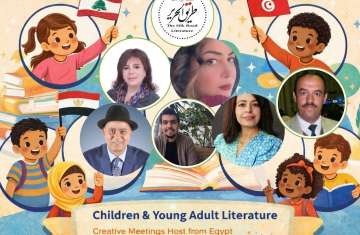Children's literature remains marginalized in most Arab countries, perceived as second or third-tier literature, much like detective novels. Consequently, critical studies of this literature are almost nonexistent, except for a few academic studies and dissertations for master's degrees. The public criticism is very distant from this field.
Perhaps the reason for this is the lack of media platforms dedicated to children's literature and their culture in general, whether in the field of journalism, newspapers, magazines, TV channels, or quality websites.
I've noticed that children's magazines - as few as they are - are closed off to certain names, whether from the editorial board or external writers. I do not want to say that there is a certain clique at every magazine, but I do say that these groups do not want anyone to break in and change their established notions about writings that may be outdated.
Here, the burden also falls on the children's authors themselves, most of whom rely on repeated stories and tales, whether from heritage stories - especially from One Thousand and One Nights, Kalila wa Dimna, Juha tales and others - or modern stories, without offering a fresh, smart approach to today's child who is very different from the child of yesterday.
I tried to critique the poetic world written for children specifically, so I put together my book "Aesthetics of the Poetic Text for Children," featuring studies of more than 25 collections of children's poetry across the Arab world. This was followed by a lexicon of children's poets in the Arab world during the twentieth century, then a book on children's literature technology, and a book on children's literature in the Arab world: issues and opinions. These are modest attempts on my part to stir the stagnant in this vital field. Not to mention my creative works for children, including poetry collections: "Street Trees are My Sisters", "Sun and Moon Talk", "Airplane and City", "Ala and the Sea", "Circles of Life", "I Love Life", "Me and Here", along with other prose works like "The Stone Family", "Dialogue with the Queen of Fruits", "Was I a Child", and others.
On another note, I believe that free study periods need to be reintroduced in schools, along with library, reading, music, sports, art, handwriting, acting, and other extracurricular activities where a child may find themselves more than in regular subjects like Arabic, Math, Science, etc. As a child, my peers and I eagerly awaited such activities to unleash our energy and discover our abilities and what we love.
Some of these activities may exist in many schools now, but they are not active and do not attract the child who may express their energy elsewhere, with other peers or friends on the street or at the club.
On the other hand, there are youth centers that can accommodate children's and youth's activities in all fields. I personally experienced this at Anfoushi Youth Center in Alexandria, for example. I participated in several workshops with children, read them poetry written for them, listened to their fresh experiences in literature, and discovered many talented children who could express themselves in writing, some excelled in recitation, some in acting, drawing, playing instruments, singing, etc.
Children possess tremendous energy that needs to be directed in the right direction, and this can only be achieved by people who are loved by the child themselves. The child should be able to talk to them, feel comfortable with them, and respond to their indirect instructions, whether these loved ones are family members such as father, mother, siblings, or the teacher at school, or the coach, or even relatives and neighbors.
I have experience in dealing with children's literature and culture in general through my previous work at "Al Arabi Al Saghir" magazine. Through it, I read and felt the pulses of Arab children through their letters, comments, drawings, and their beautiful, innocent literary pieces.
However, I return to the cultural and sports clubs. In Egypt, we have cultural palaces with multiple activities for children and young people. Some are active and well-known, others are abandoned and no one pays them any attention, due to administrative, financial, or planning problems.
As for sports clubs, they are for certain classes and are not open to everyone like youth clubs and cultural palaces. They are for the elite of society or for those who can pay their membership fees and costly annual subscriptions. They are supposed to have similar if not more activities, like swimming pools where children and young people can train in swimming, which of course are not present in youth clubs and cultural palaces. Other artistic activities at these sports clubs may be higher in standard because specific fees are paid for learning or participation, in addition to the general membership and subscription fee.
However, we may find a promising talent in singing, acting, literature, music, drawing, and sculpting emerging from youth clubs or cultural palaces that we do not find its equal in sports clubs. True talents do not recognize big or small places, but they sprout anywhere suitable for germination.
I believe that those responsible for the upbringing of children in our country, whether in education, or the ministries of culture, youth, or media, should pay attention to these aspects I mentioned earlier, so that these children do not go to other places that may be extremist environments or dens for sex and drugs.

Comments